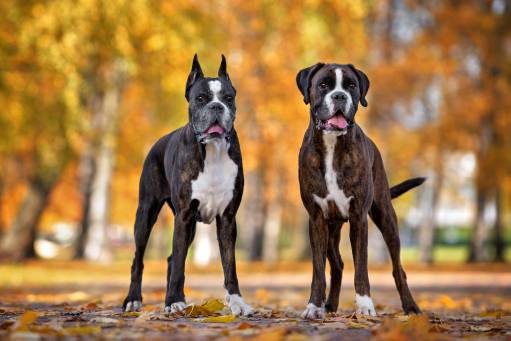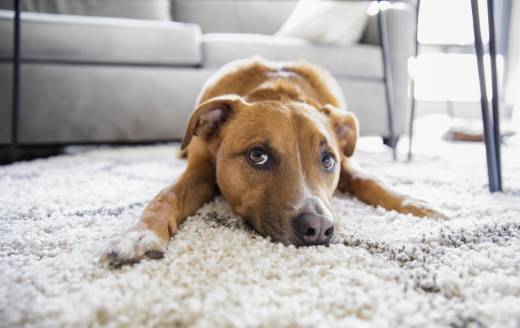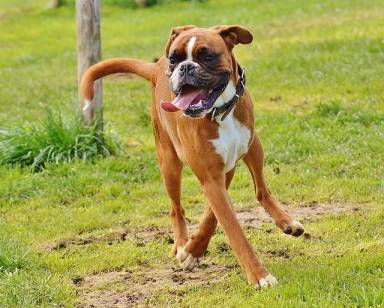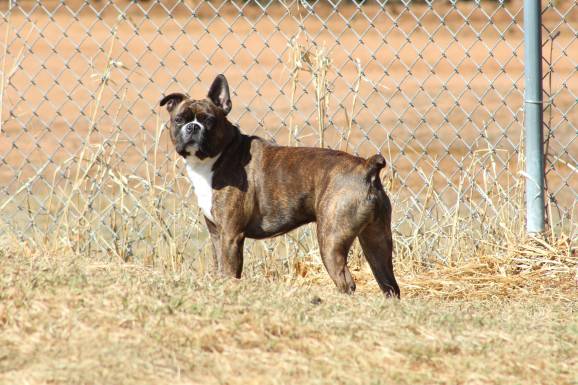Connect with a verified veterinarian in minutes. Licensed vets are available 24/7 to answer your questions. No need to worry about your furry family member.
Boxers are an extremely popular dog breed. These medium-sized dogs are darling and have a ton of personality, so what’s not to like?
Are you interested in adopting a Boxer but aren’t sure? Are you looking for a specific type of Boxer and would like more information about the dog? If so, then read on! We’ve put together a list of Boxers and have included information about each type!
What is a Boxer?
View this post on Instagram
Boxers are intelligent, large, muscular dogs that have square heads. The dogs look very commanding; however, their eyes belie the love, joy, and mischievousness of these adorable dogs. Boxers are playful and have plenty of energy. They’re sometimes referred to as “Peter Pan” dogs. That’s because they don’t mature until they’re about three years old. These dogs have a long puppyhood to enjoy!
The ancestor of the Boxer was the German Bullenbeisser, or a Bulldog, that was descended from Mastiffs. The Bullenbeisser was bred to hunt bear, wild boar, and deer. The dog’s job was to catch the prey and hold it down until the hunters arrived. You know these dogs had to be brave for a job like that.
Over time, Bullenbeissers were used more on the farm and by butchers. The dogs were put to work guarding and driving cattle.
The Boxer we know today was first bred in the late 19th century. A German, by the name of Georg Alt, bred a brindled female Bullenbeisser with another local dog. The origin or type of dog is unknown. In that very first litter was a fawn and white male dog that was named Lechner’s Box. This is the ancestor of the modern Boxer dog breed.
Over the years, the dog breed became famous across parts of Europe, somewhere in the 1890s. Then in 1903, Boxers were imported to the US. The first Boxer was registered with the AKC in 1904. Unfortunately, there weren’t many female Boxers to breed additional dogs.
Then in WWI, Boxers were used by the military. They were given jobs such as messenger carriers, carrying backs, and acting as attack and guard dogs.
The breed’s popularity grew after the war in the US. In the 1940s, Boxer mascots returned from the war with their soldier pet parents. The breed then became more popular, soon becoming a beloved companion dog.
Are There Different Types of Boxers?
View this post on Instagram
That’s a great question! While there’s a popular idea that there are different types of Boxers, the truth is there’s only one type of Boxer dog. All Boxers belong to the same breed, and there are no official subcategories or recognized variants.
So, why do people believe there’s more than one type of Boxer dog? There seems to be some confusion over Boxer types because of a morphological difference found in some individual dogs within the breed. These differences are usually found in different countries. It’s these different variations within the breed that have led people to believe there’s more than one type of Boxer. What’s even more confusing is that international organizations have different breed standards based on the Boxers in their own country. How confusing is all that?
What does morphology refer to? Morphology is a fancy word that refers to a dog’s physical characteristics. That’s it!
The Boxer dog was taken to different countries. In each country, the dogs were bred with the characteristics most prized in that country. Thus, the Boxer dog breed developed some different physical characteristics and a slightly different temperament in each country.
Each type of morphological trait and temperament was carried in the genes of the dogs in that area or country. These were the basis for the slight differences found among the Boxer breed today.
So, there’s no official type of Boxer, and while there are variations, none are standard across the breed. We understand this is confusing!
In the next sections, we’ll take a look at the different types of Boxers that come from different countries!
1. German Boxer Dog
View this post on Instagram
The German Boxer is considered the traditional Boxer dog, and for some, they’re the only type of official Boxer dogs. Even before the German Boxer was bred, there were other types of Boxers. However, there was no effort to standardize the dogs until Friedrich Robert, R. Hopner, and Elard Konig became interested in the dogs.
These three men created the first Boxer dog breed club that was called the Deutscher Boxer Club. The funny thing is that the German Boxer breed wasn’t standardized until 1951 when two other Boxer breed types came along.
The German Boxer’s physical characteristics (morphology) are a bit larger and stronger than other types of Boxers. These dogs have large, dense bones that cause their legs to be longer. Their muscles are also more pronounced.
Another feature of the German Boxer is their 1:2 ratio between the length of their muzzle and the length of their skull. The snout is wider than the UK Boxer dog and smaller than the American Boxer.
2. United Kingdom Boxer Dogs
View this post on Instagram
The UK Boxer dog, also called the British Boxer or English Boxer was founded by the Kennel Club of the United Kingdom (KC) in 1948. This Boxer type was the second Boxer type recognized.
English Boxers tend to be more athletic and sleek than other Boxer dogs. Their body has more slender muscles, which allows the dogs to be more athletic and agile. They can also be more precise and graceful in their movements.
These are the smallest Boxer dogs, with shorter and thinner legs. Even so, these dogs are still strong!
3. American Boxer Dogs
View this post on Instagram
American Boxer dogs were the last type of Boxer to be developed. However, it was the first Boxer dog recognized by the American Kennel Club in 1904. American Boxers don’t have wrinkles, and they have a denser coat, with brighter fur than the other Boxers. Their muzzles are also wider than the UK and German Boxers.
The AKC classified Boxers as working dogs because they can do so many jobs. As noted earlier, they performed various jobs for the military in WWI. They also work as guard dogs, police dogs, and as hunting dogs.

Review symptoms, medications & behavior to keep your pets healthy with a Vet Online in just minutes.
Ask a Vet Live NowWhat are the Differences Between the American & German Boxer Dogs?
That’s a great question! The biggest difference between the American and German Boxers is their size and wrinkles (or lack of wrinkles). For instance, American Boxers are larger than German Boxers, and they have no wrinkles. On the other hand, German Boxers are stockier and have “looser” coats, leading to wrinkles.
Here’s a table that shows more of the differences between the American and German Boxers.
| American Boxers | German Boxers | |
| Height | 21.5-25 inches | 20.9-24.8 inches |
| Weight | 50-80 lbs | 55-66 lbs |
| Color | Fawn, brindle, and reverse brindle | Fawn & brindle |
| Skin | No wrinkles | Wrinkles |
| Coat | Tight to skin & shiny | Less tight-fitting |
| Muscling | Slim | Stocky |
| Tail | Docked | Natural, normal length |
| Ears | Pointy & set high | Natural , flop forward |
| Muzzle | Wider | Longer |
| Breed Registry Recognition | American Kennel Club | Federation Cynologique Internationale |
| Purpose | Working, guard, and companion | Working, guard, and companion |
Boxer Dog Colors
There are two colors that are recognized as standard by the AKC: brindle and fawn. Even so, Boxers do come in other colors, including black & white.
Each of the three types of Boxers can have one of four coat colors, including:
1. Fawn
This is the standard Boxer color. This color ranges from light tan to fawn, something like a deer or mahogany wood.
The Federation Cynologique Internationale, on the other hand, recognized fawn shades as in the middle, being closer to red. They believe these dogs are more beautiful.
Boxers with a fawn coat may also have white in the coat, though the white cannot cover more than 1/3 of their entire body. The white markings should only enhance the dog’s appearance. Other white markings on their sides or back are considered undesirable. A white head or white on one side of the head is also undesirable. However, the dogs can have white markings on their face. They should never have a black mask on their face.
View this post on Instagram
2. Brindle
Brindle coats are a pattern rather than a color. Brindled Boxer comes in two different colors, including:
- Fawn with black stripes
- Reveres brindle
The most common type of brindle is a fawn background with black stripes. What’s more, the black stripes must run parallel.
Reverse brindle is when the black stripes are very wide and almost block out the background color.
Brindle German and English Boxers must have black stripes that must strongly contrast with the fawn color. English Boxers can’t have stripes that are too close together or too thinly separated.
View this post on Instagram
3. Black
Some disreputable breeders try to sell Black Boxers are rare; however, no purebred black Boxer exists. The reason is that they don’t carry the gene that creates a completely black coat.
If you see Black Boxer for sale, they are usually a Boxer mix, or they may have reverse brindling. A mixed Boxer may look exactly like a purebred Boxer; however, they are not purebred at all.
You won’t find a reputable breeder selling a black Boxer.
View this post on Instagram
4. White
What about white Boxers? White Boxers do exist! Their coat may look completely white. However, these are not albino dogs. Instead, they have a marking called a “flash.” The flash only appears on the purebred Boxer and is caused by a lack of pigmentation in the dog’s skin. They’re very different from true albinos because they lack pigmentation only in some areas of the body. An albino lacks pigmentation over their entire body.
A white Boxer is not rare and may have some fawn or brindle spots.
View this post on Instagram
How to Identify Different Types of Boxers
So, how can you identify the different Boxer types? Many people are confused when they see a Boxer. They may find it difficult to tell what type of Boxer the dog is. They may even confuse one Boxer type for another!
Here are some ways you can identify the type of Boxer:
| American | English | German |
| The tallest, with no wrinkles, and usually has cropped ears and a docked tail. | Smallest Boxer, with an athletic body. He has small feet and high knuckles. | The stockiest Boxer, with the most muscle and sturdier bones. They also have a longer muzzle than the American & English Boxers. |
Other Boxer Traits
Boxers tend to be highly alert and watchful of everything going on around them. When they’re not having fun, you’ll notice the dogs have a dignified air and are very confident. However, they may be wary of strangers at first. Even so, they are friendly to most people and only aggressive when protecting their family and property.
Boxer temperaments do vary and depend on their parents, training, and socialization. Puppies that have healthy, friendly parents and who receive socialization and training tend to be more confident and easy-going. These are well-rounded dogs who can do well in many situations. Training and socialization are imperative in these dogs.
No matter how you look at it, Boxers can make wonderful family companions!
Boxer Health Issues
Boxers are healthy dogs; however, they are prone to certain health conditions, including:
- Cancer
- Aortic stenosis
- Boxer cardiomyopathy (BCM)
- Hip dysplasia
- Hypothyroidism
- Corneal dystrophy
- Demodectic mange
- Gastric dilatation-volvulus (GDV)
- Allergies
- Deafness
One of the best ways to keep your fur baby healthy is to take him for regular checkups with the vet. The vet can find and treat small health issues easily and quickly. At this stage, many conditions are easily cured. However, health conditions that are left untreated for long periods can lead to serious health problems.
So, make sure your dog sees the vet for regular checkups. Also, make sure your dog receives all of his required vaccinations.
Summing It Up
No matter the type of Boxer dog you choose, you’re sure to get a wonderful canine companion! Each type of Boxer, whether American, German, or English, is beautiful.
We hope this article helps you find the right Boxer dog companion for you and your family!
Connect with a verified veterinarian in minutes. Licensed vets are available 24/7 to answer your questions. No need to worry about your furry family member.

Tom
Tom has always loved to write since he was little - he wanted to be either a writer or a veterinary doctor, but he ended up being a professional writer while most of his works are based on animals. He was born in San Francisco but later moved to Texas to continue his job as a writer. He graduated from the University of San Francisco where he studied biotechnology. He is happily married and a soon to be father!
Review symptoms, medications & behavior to keep your pets healthy with a Vet Online in just minutes.
Ask a Vet Live Now




